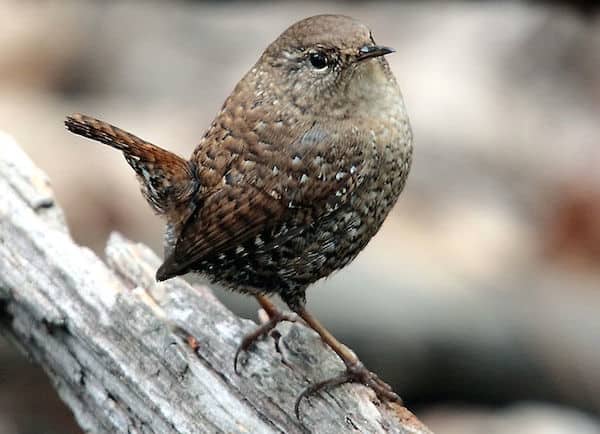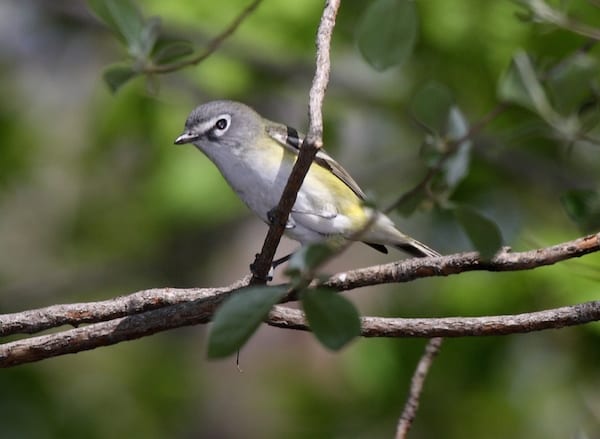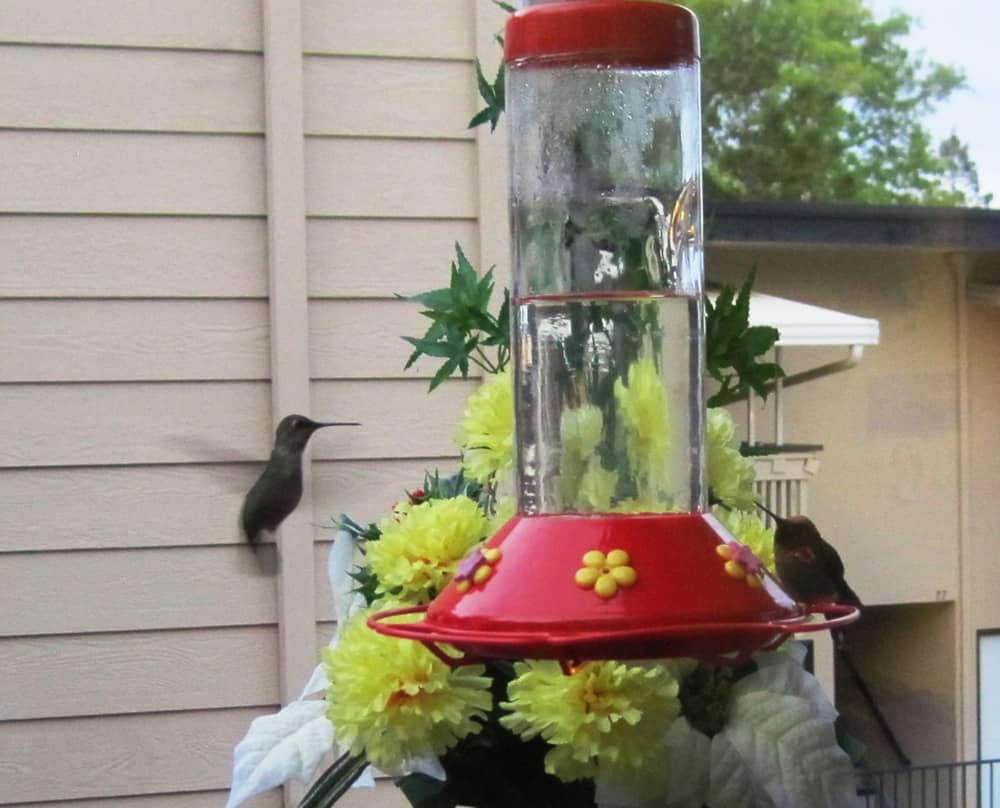On a per-pound basis, the winter wren generates more song for its weight than any other North American songbird. This stubby-tailed, chocolate-brown mouse of a bird frequents wooded streamside habitats and coniferous forests, both in winter and summer. The long burbling song can be given from an exposed treetop perch in spring, or from inside a jumble of logs and tree roots when the wren takes a break from foraging.
The winter wren nests across the northernmost states and Canadian provinces, and a high elevations in mountain ranges to the south. Winter wrens can be found almost anywhere there are dense woods. The more jumbled and tangled the forest floor is, the better.
What to Look and Listen For
The winter wren is one of North America’s smallest birds, kinglet-sized and rounded in shape like a small teapot, with a short stubby tail for a spout. Its bill is short and thin. Dark brown feathers suit its skulking habits, for this is a bird that likes to hide among the leaf litter or crawl into dark crevices in rocks or the cavities created by fallen logs. (Its scientific name, Troglodytes, means “cave dweller.”)
Often found along stream banks or thick roadside tangles, this wren may pass unnoticed much of the time unless you are attuned to its double-click chip note. In the breeding season, however, males will often establish a perch on top of a snag and remain there for long periods as they sing their glorious, bubbly song.
When and Where to Look
In North America, winter wrens breed across Alaska and much of Canada and down into the coniferous forests of the northern United States. They also nest down the Appalachian chain at high elevations and in the Rockies, the Pacific Northwest, and along the California coast.
They winter in most of the milder parts of this breeding range, and also throughout much of the lower half of the United States. Various races of the species have spread around the globe from Siberia through Europe and into Iceland, so travelers may find this familiar bird in northern settings around the world.
Feeding Behavior
Like all wrens, this little bird lives mainly on insects and spiders, although it has been known to eat fish on occasion, and may take berries in fall and suet from feeding stations in winter if the opportunity arises and other food is scarce. It tends to forage on the ground in a furtive manner, scrabbling about under fallen leaves like a mouse. It may also search, nuthatch-fashion, up and down tree trunks and along the larger limbs, probing bark crevices for prey.
Nesting Behavior
Males begin singing in earnest in early spring, both to defend territory and to attract mates. (The plural form is intentional: this species is often polygamous if given the chance.) Wing fluttering and other body actions add to the male’s attraction during courtship time. He may build several “dummy” nests, but once a female has chosen the one that suits her, he helps her line it with animal hair or feathers.
She lays about six eggs, and the responsibility for incubation is hers alone; it takes about two weeks. Once the young hatch, both sexes help feed the growing brood. The nestlings fledge at about 19 days of age.
—Norma Siebenheller




